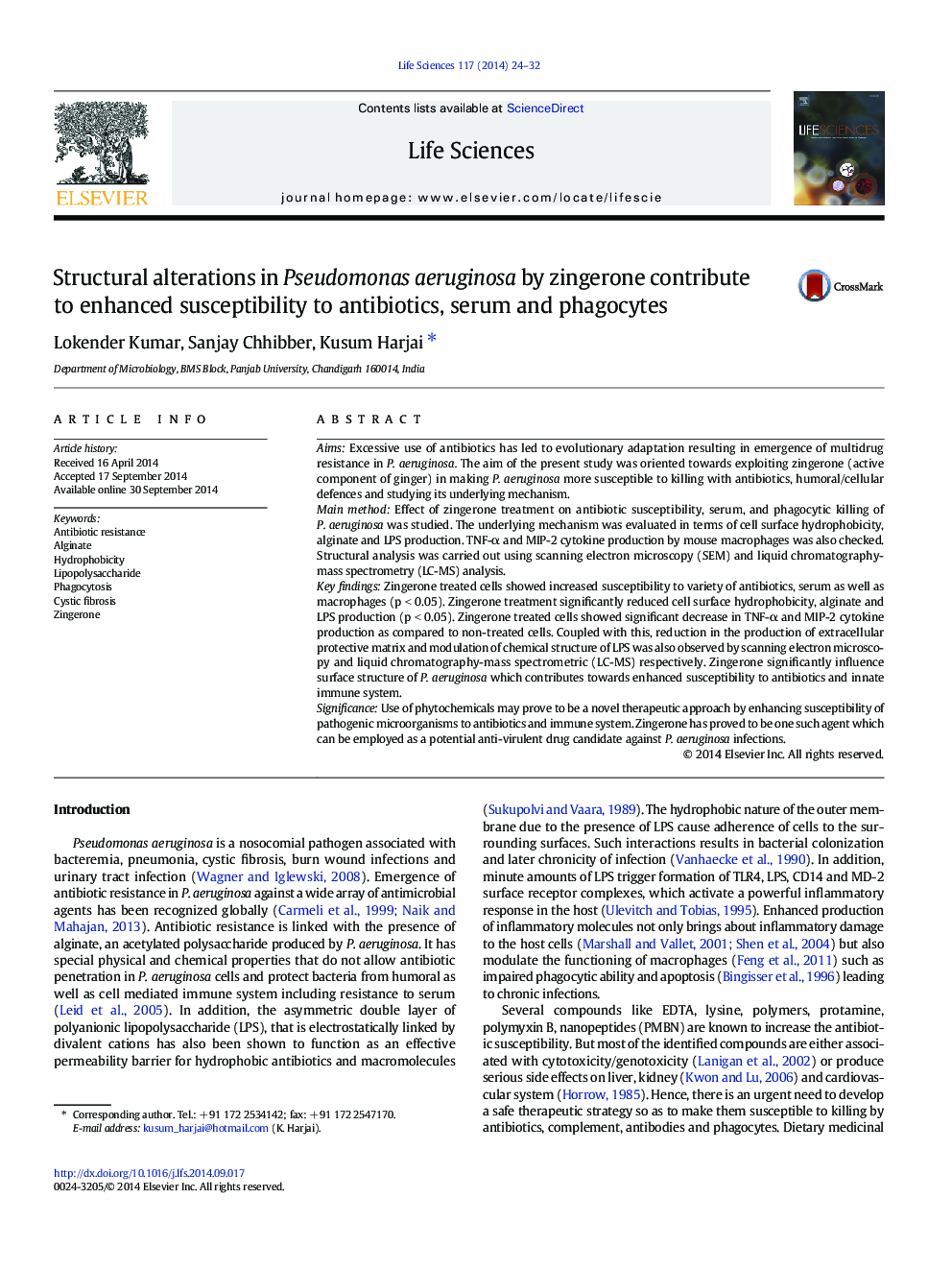| Article ID | Journal | Published Year | Pages | File Type |
|---|---|---|---|---|
| 2551055 | Life Sciences | 2014 | 9 Pages |
AimsExcessive use of antibiotics has led to evolutionary adaptation resulting in emergence of multidrug resistance in P. aeruginosa. The aim of the present study was oriented towards exploiting zingerone (active component of ginger) in making P. aeruginosa more susceptible to killing with antibiotics, humoral/cellular defences and studying its underlying mechanism.Main methodEffect of zingerone treatment on antibiotic susceptibility, serum, and phagocytic killing of P. aeruginosa was studied. The underlying mechanism was evaluated in terms of cell surface hydrophobicity, alginate and LPS production. TNF-α and MIP-2 cytokine production by mouse macrophages was also checked. Structural analysis was carried out using scanning electron microscopy (SEM) and liquid chromatography-mass spectrometry (LC-MS) analysis.Key findingsZingerone treated cells showed increased susceptibility to variety of antibiotics, serum as well as macrophages (p < 0.05). Zingerone treatment significantly reduced cell surface hydrophobicity, alginate and LPS production (p < 0.05). Zingerone treated cells showed significant decrease in TNF-α and MIP-2 cytokine production as compared to non-treated cells. Coupled with this, reduction in the production of extracellular protective matrix and modulation of chemical structure of LPS was also observed by scanning electron microscopy and liquid chromatography-mass spectrometric (LC-MS) respectively. Zingerone significantly influence surface structure of P. aeruginosa which contributes towards enhanced susceptibility to antibiotics and innate immune system.SignificanceUse of phytochemicals may prove to be a novel therapeutic approach by enhancing susceptibility of pathogenic microorganisms to antibiotics and immune system. Zingerone has proved to be one such agent which can be employed as a potential anti-virulent drug candidate against P. aeruginosa infections.
